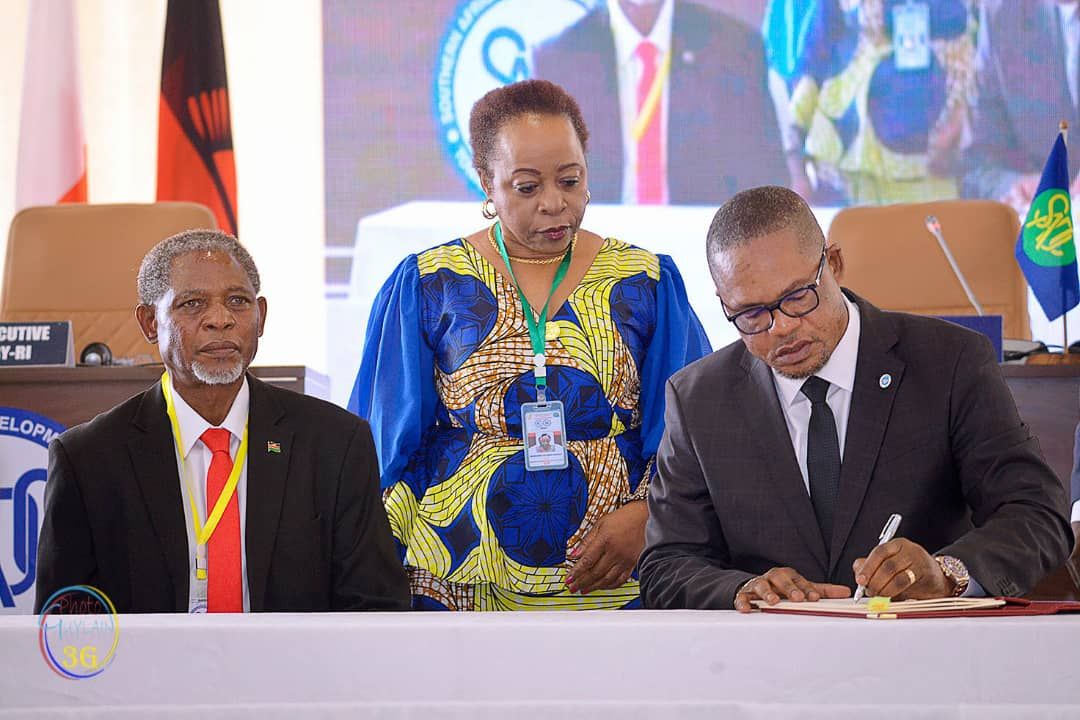Towards early warning systems for all: Operationalization of the SADC Humanitarian & Emergency Operations Centre (SHOC)

Followed by the ambition of the United Nations, as expressed by Secretary General António Guterres, to protect everyone with early warning systems against disasters by 2027 and in line with the assessment of the Multi-hazard Early Warning and Early Action System Programme (MHEWAS) developed by the African Union (AU) and the Maputo Declaration, GIDRM is committed to risk-informed development through the detection, analysis, monitoring and forecasting of hazards, warning and dissemination of risk information, as well as the preparedness and response by supporting the “Roadmap for the establishment of the SADC humanitarian and emergency center” (SHOC). This support focuses mainly on the operationalization of the SHOC by developing the “Sustainability Plan and Business Continuity Model for the SHOC”. The plan and model will capture required resources, tools, capacities, processes and systems including revenue collection, training needs, roles and responsibilities to sustainably fulfil its functions and ensure that it remains operational at all times.
Located in Nacala, (MOZ), once fully operational, the SHOC will be responsible for the coordination of regional disaster risk preparedness, response and early recovery to support SADC Member States affected by disasters as well as facilitation of the supply equipment and supplies that SADC responders require during deployment of humanitarian support to Member States.

©GIDRM/GIZ
From 23-25th May 2023, Ministers, officials, and other relevant actors responsible for disaster risk management in the SADC region met in Kinshasa, Democratic Republic of Congo. In her opening remarks, the SADC Deputy Executive Secretary-Regional Integration, Ms. Angelo Makombo N’tumba, reminded the meeting of the impact of the recent hydro-meteorological episodes, particularly, tropical cyclone Freddy, in which more than 1000 people lost their life in Madagascar, Malawi and Mozambique as well as areas in the South Africa. She emphasized that the SADC Secretariat is in solidarity with all Member States who are affected, drawing the attention to the need of doubling the regional efforts to save lives and safeguard development gains. She further appealed for the support of all actors, including international cooperation partners, to enable the operationalization of the SHOC to address the effects of climate change and variability. In conclusion, she congratulated the Member States that have already signed the Inter-Governmental Memorandum of Agreement (MoA) for the establishment of the SHOC and called upon more signatures to reach the benchmark of two thirds for its operationalization within 30 days.
During the ministerial meeting, progress regarding the undertaking of a regional DRM value chain mapping study was discussed, which is supported by GIDRM. The study aims to identify the strategic, structural, coordination and operational challenges and gaps in the region along the DRM value chain and provide guidance for an improved practice. The study is at consultation stage with the Secretariat, Member States and regional DRM stakeholders. Minsters also recognized that through the SADC-DRR Unit and its cooperation with GIDRM, the United Nations University (UNU) is implementing the “CARICO SADC Study: Lessons from COVID-19 for understanding and managing systemic risks in the SADC region”. Its recommendations will inform the regional post-COVID-19 recovery plan to be more risk-informed as society recovers and regional integration develops.
During the meeting two additional SADC Member States signed the MoA, which results in six additional signatures needed for the SHOC’s operationalization. The participants reiterated their commitment to the Regional Disaster Preparedness Strategy and Action Plan 2022-2030, the Regional Multi-hazard Framework 2022-2030 and the annual multi-hazard plan for 2023-24, which have been reviewed by GIDRM through the SADC-DRR Unit since their inception.

©GIDRM/GIZ
Chronologically, the United Republic of Tanzania was the first SADC Member State to sign the Agreement on 23rd February, 2023 following the signing by the Minister of State in the Prime Minister's Office: Policy, Parliamentary Affairs, Labour, Employment, Youth and the Disabled in the United Republic of Tanzania. The Republic of Namibia followed by the signature of Deputy Prime Minister and Minister for Internal Relations and Cooperation, and Minister responsible Disaster Risk Management in the Republic of Namibia (14th March 2023) Followed by Namibia, the MoA was signed by the Minister of Foreign Affairs and Cooperation and Minister responsible Disaster Risk Management of the Republic of Mozambique. The fourth Member State to sign the Agreement was the Republic of Zimbabwe on the 25th April, 2023 by the Minister of Local Government, Public Works and National Housing also responsible for Disaster Risk Management.
Further information:
- SADC Ministers for DRM convene Extraordinary Meeting
- Zimbabwe becomes 4th Member State to sign SHOC MoA
- SADC Ministers of Justice recommend approval of SHOC
- SADC Humanitarian and Emergency Operations Centre (SHOC) | SADC
- SADC Moves Towards Establishing Disaster and Emergency Operations Centre
- UNDP | Africa Multi-Hazard Early Warning and Early Action System
- Maputo Declaration
- UNDRR | Early warnings for all